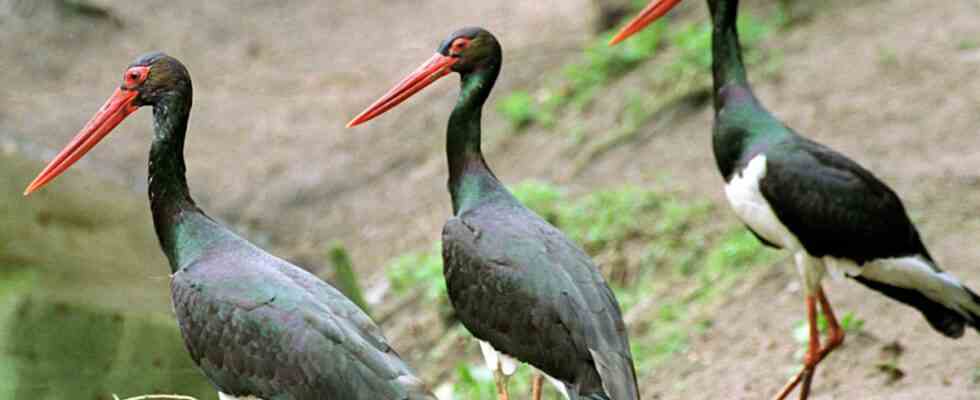High treetops, lonely spruce forests and romantic meadow valleys: The Franconian Forest is one of the quieter areas of Bavaria. Most of the approximately 100,000 hectares of forest near Hof is a nature park. Its beauties include the Höllental near Bad Steben, the Radspitze and the “Eckscher Höhenweg”, the Steinachklamm near Grafengehaig and the Teuschnitzer Au.
What few people know: more black storks live in the Franconian Forest than in any other region in Germany. Experts estimate the population there at more than ten percent of the entire German population. The State Association for Bird Protection (LBV) is now calling for the Franconian Forest to be designated as a European bird sanctuary. The LBV species protector Andreas von Lindeiner justified this with “Bavaria’s special responsibility for the species”.
Black storks (Ciconia nigra) are much more shy than white storks (Ciconia ciconia), which often build their nests on church towers, abandoned chimneys or other high buildings right in the villages. Externally, both species are very similar, with one difference: the black stork’s plumage is predominantly black and has a greenish-violet metallic sheen.
Black storks live secluded in extensive forests and fly to their wintering grounds in Africa about a month later than white storks. In Bavaria, apart from the Franconian Forest, they are found in the Upper Palatinate and Bavarian Forests, in the Spessart and the Rhön. The population in the Franconian Forest is more than 70 breeding pairs. Black storks are strictly protected but not endangered. According to the State Office for the Environment, the species is even more likely to spread.
Nevertheless, there are dangers for black storks. Above all, the climate crisis. In the meantime, streams and even small rivers are drying up more and more frequently during the hot and dry periods of summer or have so little water that there are fewer and fewer fish, amphibians or insects in and around them. But black storks live on these animals, if they don’t find enough food, this quickly leads to a loss.
In addition, the climate crisis also poses indirect dangers for the species. The bark beetle, which kills off heaps of spruce trees, is one such species. “The Franconian Forest is very spruce-heavy, here the black storks build their nests almost exclusively on spruce trees with old broken tops,” says Lindeiner. “Therefore, forests with such spruces must be specially protected.”
And then there is the energy transition. The LBV definitely supports the end of nuclear power and fossil fuels. But he fears that the large forests in Bavaria will now come under particular pressure. Because the CSU is sticking to the controversial distance rule 10H for wind turbines, the expansion of wind power could be pushed into them. In the Franconian Forest, too, there is always speculation about a new wind farm. “But such a project is not compatible with a top breeding area for black storks,” says Lindeiner.

